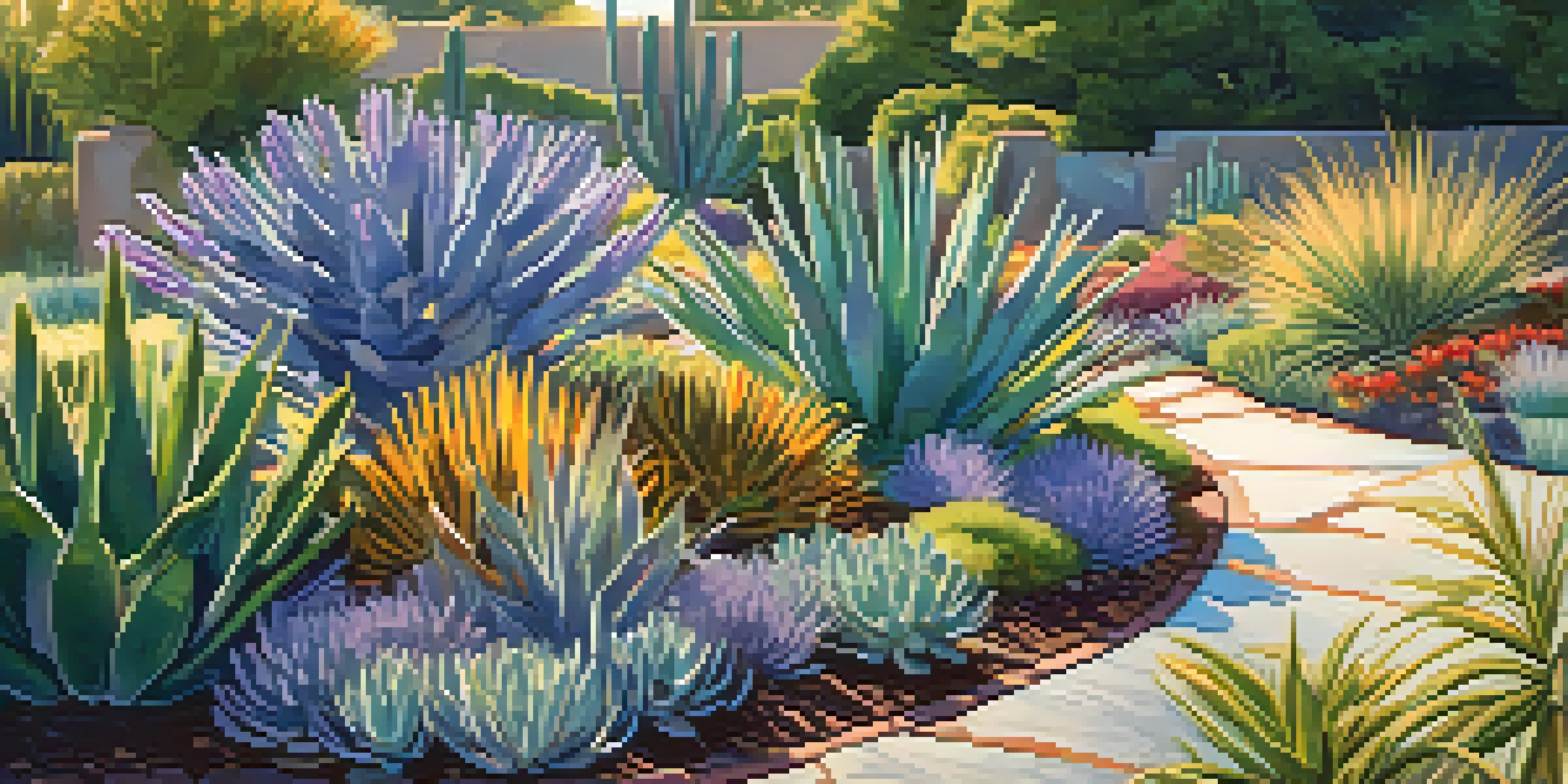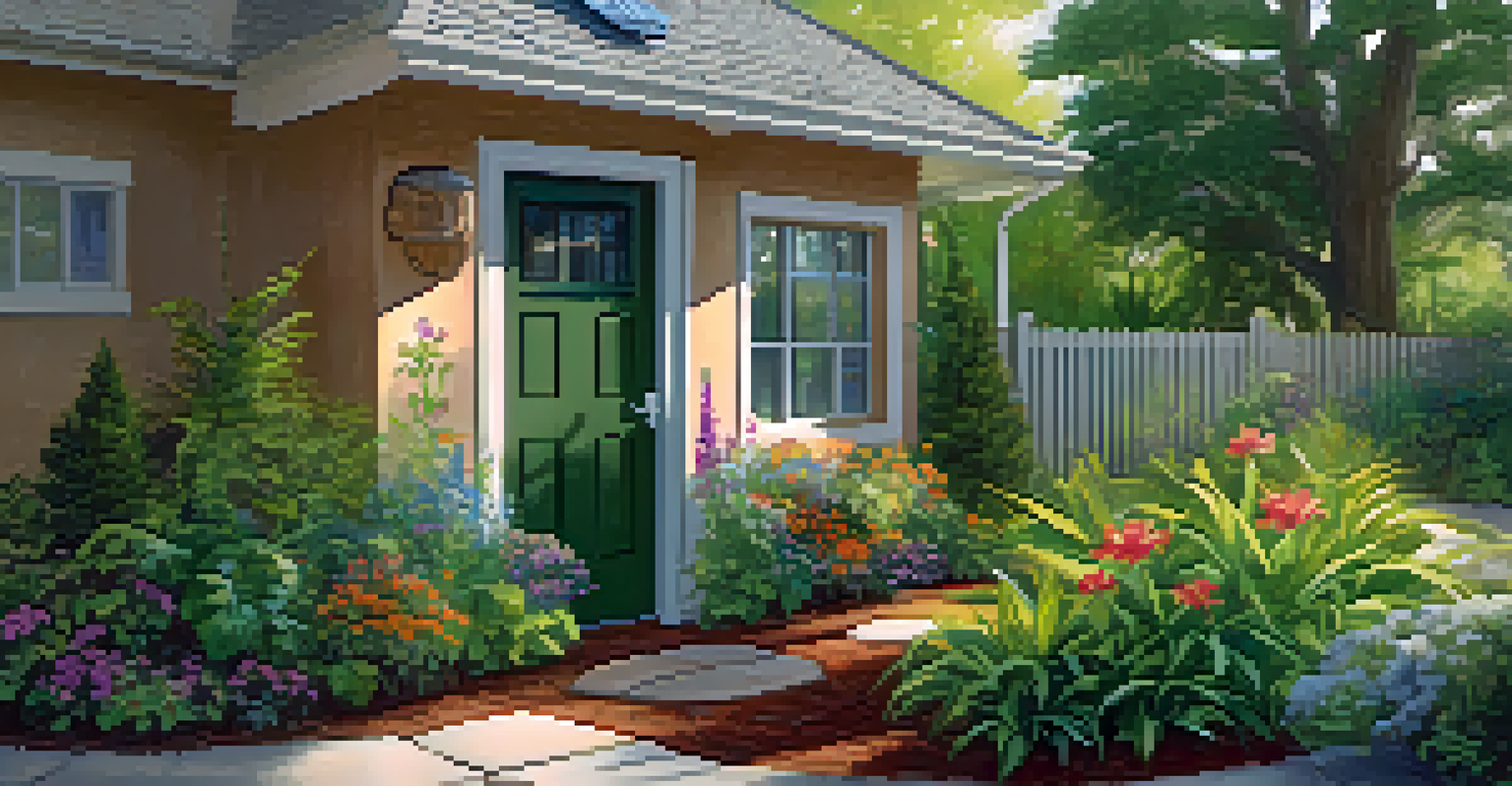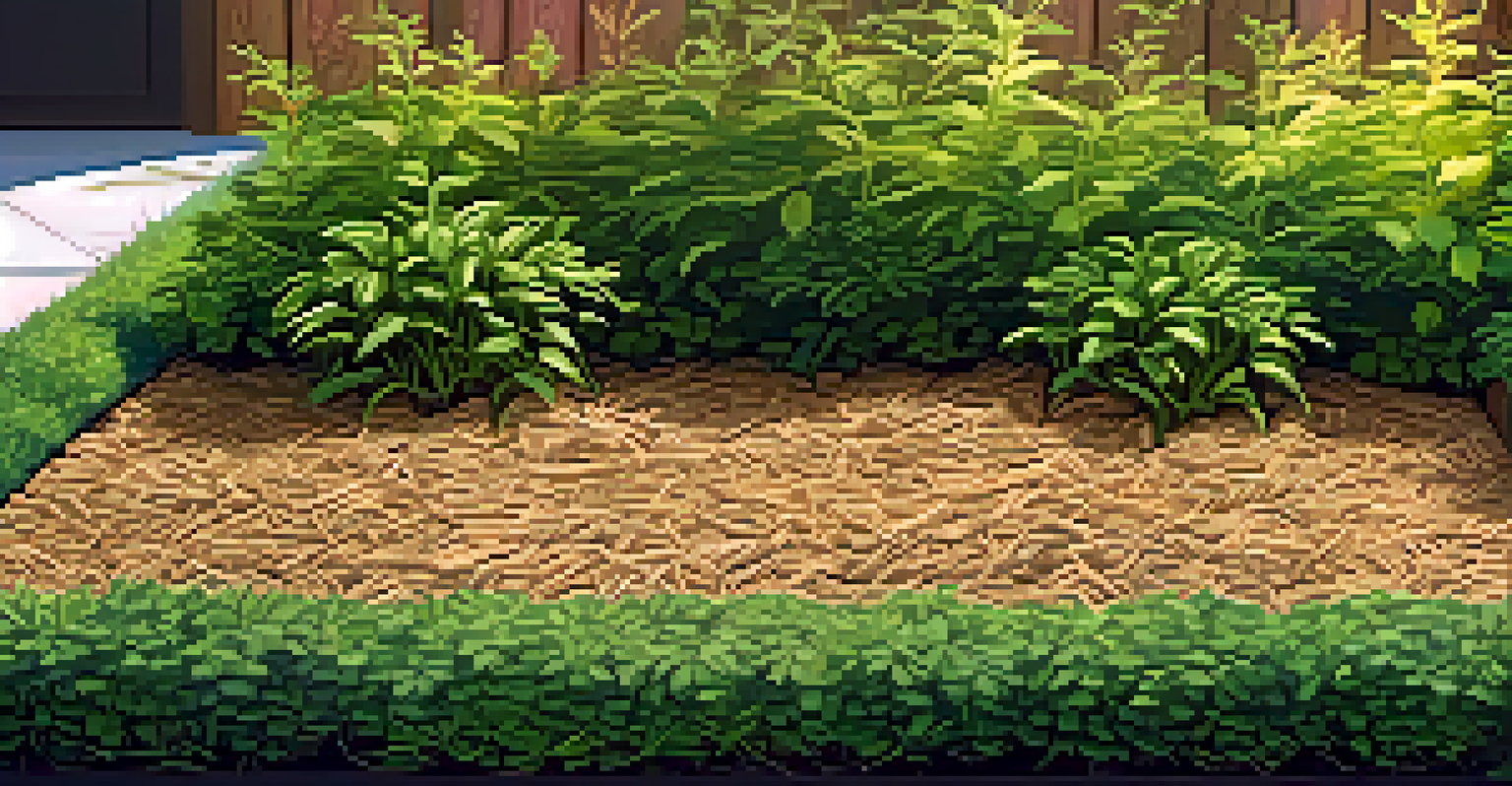Water Conservation Techniques for Sustainable Gardening

Understanding the Importance of Water Conservation
Water conservation is crucial for sustainable gardening, especially as climate change impacts water availability. By using less water, gardeners can help preserve this vital resource while maintaining healthy plants. Sustainable gardening not only benefits the environment but also reduces costs associated with water usage.
Water is the driving force of all nature.
Every drop counts, and understanding how much water your garden needs can make a significant difference. Most plants flourish with deep, infrequent watering rather than shallow, frequent sprinklings. This approach encourages deeper root growth, leading to healthier plants that can withstand dry periods.
Moreover, water conservation practices contribute to local ecosystems. Healthy gardens can support local wildlife, such as birds and beneficial insects, creating a balanced environment. This symbiosis underlines the importance of integrating water-saving techniques into your gardening routine.
Implementing Rainwater Harvesting Systems
Rainwater harvesting is an effective way to collect and store rainwater for garden use. By installing rain barrels or cisterns, gardeners can capture runoff from rooftops and other surfaces. This not only conserves municipal water but can also reduce stormwater runoff, helping to prevent flooding and erosion.

Using harvested rainwater for irrigation can significantly decrease your water bills. As an added bonus, rainwater is generally free of chemicals found in tap water, making it a healthier option for your plants. Just be sure to use a proper filtration system to keep debris out of your stored water.
Conserve Water for Sustainable Gardening
Implementing water-saving techniques helps maintain healthy plants while preserving this vital resource.
To maximize your rainwater harvesting efforts, consider directing downspouts towards your collection system. Additionally, you can create a rain garden that allows excess runoff to naturally filter into the ground, promoting groundwater recharge while providing a beautiful landscape feature.
Mulching: A Simple Yet Effective Technique
Mulching is an essential gardening technique that helps retain moisture in the soil. By covering the ground with organic materials like straw, wood chips, or shredded leaves, you can create a barrier that reduces evaporation. This means less frequent watering, allowing your plants to thrive even during hot, dry spells.
The best time to plant a tree was twenty years ago. The second best time is now.
Besides conserving water, mulch also suppresses weeds, which compete for moisture and nutrients. This dual benefit saves you time and effort in maintaining your garden, letting you focus on the joy of gardening instead. Additionally, as the mulch breaks down, it enriches the soil with organic matter.
To make the most of mulching, apply a layer of 2-4 inches around your plants, keeping it away from the stems to prevent rot. Regularly replenishing the mulch will ensure your garden remains well-protected and moisture-rich throughout the growing season.
Choosing Drought-Resistant Plants
Selecting drought-resistant plants is a key strategy for sustainable gardening. These resilient species are adapted to thrive in low-water conditions, requiring less maintenance and irrigation. Native plants, in particular, are excellent choices since they’re well-suited to local climates and soil types.
Examples of drought-resistant plants include succulents, lavender, and ornamental grasses. These plants not only conserve water but also add beauty and variety to your garden. Incorporating a mix of these species can create a vibrant landscape that flourishes with minimal water input.
Utilize Rainwater Harvesting
Collecting and using rainwater for irrigation can significantly reduce water bills and provide chemical-free water for plants.
When planning your garden, consider grouping plants with similar water needs together. This technique, known as hydrozoning, allows you to water more efficiently while minimizing waste. By creating a garden that respects the natural water requirements of its inhabitants, you’re contributing to a more sustainable ecosystem.
Efficient Watering Techniques for Gardens
Using efficient watering techniques can drastically reduce water usage in your garden. Drip irrigation systems are a fantastic option, delivering water directly to the roots where it’s needed most. This method minimizes evaporation and runoff, making every drop count.
Timing your watering can also improve efficiency. Early morning or late evening is the best time to water, as cooler temperatures reduce evaporation rates. Additionally, using a soaker hose can help ensure that moisture penetrates deeply into the soil without wasting water.
Another effective technique is to water deeply and less frequently. This approach encourages plants to develop deeper roots, making them more resilient to drought conditions. By adopting these efficient watering practices, you can create a thriving garden while conserving precious water resources.
Soil Health: The Foundation of Water Conservation
Healthy soil is crucial for effective water conservation in gardening. When soil is rich in organic matter, it can retain moisture more effectively, reducing the need for frequent watering. Practices like composting and adding organic materials can significantly improve soil structure and fertility.
Soil testing can help you understand its composition and nutrient levels, allowing you to amend it appropriately. By improving soil health, you not only enhance water retention but also provide a thriving environment for beneficial microorganisms. Healthy soil leads to healthy plants, creating a self-sustaining ecosystem.
Embrace Drought-Resistant Plants
Choosing native and drought-resistant plants minimizes water usage and creates a vibrant, low-maintenance garden.
Incorporating cover crops during the off-season is another way to promote soil health. These plants protect the soil from erosion, improve its structure, and enhance moisture retention. By prioritizing soil health, you set the stage for a sustainable garden that thrives on minimal water.
The Role of Technology in Water Conservation
Technology plays an increasingly vital role in water conservation for gardening. Smart irrigation systems can monitor soil moisture levels and weather conditions, adjusting watering schedules automatically. This ensures that plants receive just the right amount of water, preventing over- or under-watering.
Additionally, various apps can help gardeners track their water usage and set reminders for watering schedules. Some even provide tips on optimizing water use based on local climate data. By leveraging technology, gardeners can make informed decisions that align with sustainable practices.

Moreover, using moisture sensors and rain gauges can enhance water conservation efforts. These tools provide real-time data, allowing you to respond quickly to changing conditions. Embracing technology in your gardening routine not only streamlines your efforts but also promotes a more sustainable approach to water usage.